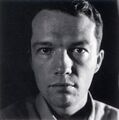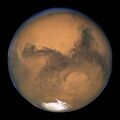Template:Selected anniversaries/August 27: Difference between revisions
No edit summary |
No edit summary |
||
| Line 1: | Line 1: | ||
<gallery> | <gallery> | ||
||1574: Bartolomeo Eustachi dies ... (born c. 1510) ... physician and anatomist whose name is given to the Eustachian tube. This narrow canal between the ear and the throat was discovered 2000 years earlier by Alcmaeon, but Eustachi was the first to fully describe it, in a treatise on the auditory organ. He was also first to describe the adrenal glands, and to make detailed studies of the teeth, including the first and second dentitions and tooth anatomy. His series of careful illustrations of abdominal and thorax structures, the nervous and vascular systems, muscles and bones were prepared as 47 copperplate engravings, but only 8 accompanied his Opuscula anatomica (1564) in his lifetime. Sadly for medical science, over a century passed before they were all published, in 1714. Pic. | ||1574: Bartolomeo Eustachi dies ... (born c. 1510) ... physician and anatomist whose name is given to the Eustachian tube. This narrow canal between the ear and the throat was discovered 2000 years earlier by Alcmaeon, but Eustachi was the first to fully describe it, in a treatise on the auditory organ. He was also first to describe the adrenal glands, and to make detailed studies of the teeth, including the first and second dentitions and tooth anatomy. His series of careful illustrations of abdominal and thorax structures, the nervous and vascular systems, muscles and bones were prepared as 47 copperplate engravings, but only 8 accompanied his Opuscula anatomica (1564) in his lifetime. Sadly for medical science, over a century passed before they were all published, in 1714. Pic. | ||
||1783: The first experimental hydrogen-filled balloon left the Champs de Mars, Paris, unmanned, and reached 900-m altitude. Under the auspices of the French Academy of Sciences, Jacques A.C. Charles sent up a 13-ft (4-m) diameter hydrogen- filled balloon of rubber- coated silk. One of the spectators was the American ambassador to France, Benjamin Franklin. The gas had been manufactured, beginning on 23 Aug 1783, by pouring 225-kg of sulphuric acid over half a ton of scrap-iron. Able to lift about 9-kg, it traveled 24-km in about 45 minutes. The balloon descended close to the little village of Gonesse, where frightened local farmers attacked it with pick axes and spades, leaving only torn remains. | |||
||1784: James Tytler made the first balloon ascent in Britain in a hot-air balloon at Ediburgh, Scotland. He exhibited his "Grand Edinburgh Fire Balloon" in the uncompleted dome of Robert Adam's Register House. It was barrel-shaped, 40-ft tall, 30-ft diameter, with hot air produced by a stove. He wore a cork jacket for protection, and sat a small wicker packing case below the balloon. Before a small number of onlookers, the balloon rose to 350 feet in the air, travelled half a mile, and landed in Restalrig village. Tytler reported that the flight was "most agreeable with no giddiness" and that he "amused himself by looking at the spectators below." Four days later, a large paying audience saw it, but that flight was much less successful. | |||
||1790: George Everest born ... geographer and surveyor. | ||1790: George Everest born ... geographer and surveyor. | ||
| Line 10: | Line 15: | ||
File:Giuseppe Peano.jpg|link=Giuseppe Peano (nonfiction)|1858: Mathematician [[Giuseppe Peano (nonfiction)|Giuseppe Peano]] born. He will do pioneering work in mathematical logic and [[Set theory (nonfiction)|set theory]]. | File:Giuseppe Peano.jpg|link=Giuseppe Peano (nonfiction)|1858: Mathematician [[Giuseppe Peano (nonfiction)|Giuseppe Peano]] born. He will do pioneering work in mathematical logic and [[Set theory (nonfiction)|set theory]]. | ||
||1859: Petroleum is discovered in Titusville, Pennsylvania leading to the world's first commercially successful oil well. | ||1859: Petroleum is discovered in Titusville, Pennsylvania leading to the world's first commercially successful oil well. “Colonel” Edwin L. Drake drilled the first successful oil well in the United States, near Titusville, Pennsylvania. The drilling had reached 69 feet 6 inches, when a dark film floating on the water below the derrick floor was noticed. | ||
||1868: Henrietta Swan Leavitt born ... astronomer and academic. | ||1868: Henrietta Swan Leavitt born ... astronomer and academic. | ||
Revision as of 11:18, 26 August 2018
1858: Mathematician Giuseppe Peano born. He will do pioneering work in mathematical logic and set theory.
1926: Chemist and composer George Brecht born. He will be a conceptual artist and avant-garde composer, as well as a professional chemist who will work as a consultant for companies including Pfizer, Johnson & Johnson, and Mobil Oil.
1934: Marie Curie, French-Polish physicist and chemist dies. She conducted pioneering research on radioactivity, discovering the elements polonium and radium.
1938: Mathematician and philosopher Edmund Husserl publishes new class of Gnomon algorithm functions based on transcendental consciousness as the limit of all possible knowledge.
2003: Mars makes its closest approach to Earth in nearly 60,000 years, passing 34,646,418 miles (55,758,005 km) distant.
2017: Dennis Paulson of Mars wins Pulitzer Prize for Best Reality Television Show.





